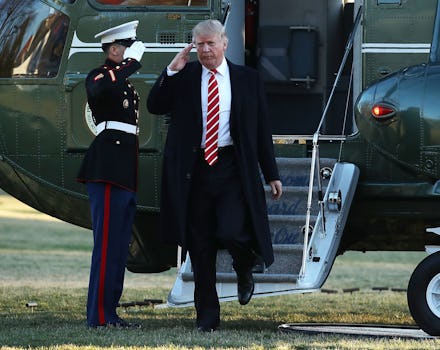White House list of 78 terrorist attacks omits right-wing violence

The White House on Monday released a list of terrorist attacks in support of President Donald Trump's otherwise unsupported claim the U.S. media is deliberately suppressing information about "radical Islamic terrorists."
By later in the day, Trump's statement certain attacks were "not even being reported" by the "very, very dishonest press" had taken on a new meaning for White House press secretary Sean Spicer, who instead insisted Trump meant the attacks were underreported.
The list, which includes 78 attacks from September 2014 to December 2016, contains numerous attacks that were widely covered, including the massacres in San Bernardino, California; Paris; and Orlando, Florida. It also includes numerous attacks in which no fatalities were reported.
But there was also a glaring omission: Attacks like white supremacist Dylann Roof's assault on Charleston, South Carolina's Emanuel AME Church in which nine black churchgoers were murdered.
Nor does the release mention two mass shootings of police officers in 2016 in Dallas or Baton Rouge, Louisiana, which killed five and three members of law enforcement, respectively.
Right-wing violence has killed at least 50 people in the United States since 9/11, according to the think tank New America. Acts of terrorism attributed to Islamic extremists killed 94 — more than right-wing extremists, though as the New York Times reported in 2015, police departments around the country consider such right-wing extremists one of the nation's premier terror threats.
Instead, the list seems to square solely at attacks allegedly committed by Muslims, dovetailing with Trump's executive order denying entry to refugees and individuals from seven Muslim-majority countries, but providing only a partial accounting of ideologically motivated attacks across the globe. Other statements from administration officials hammered home that point on Monday.
"The real point here is that these terrorists attacks are so pervasive at this point that they do not spark the wall-to-wall coverage they once did," White House spokeswoman Lindsay Walters told the Washington Post. "If you look back just a few years ago, any one of these attacks would have been ubiquitous in every news outlet, and now they’re happening so often — at a rate of more than once every two weeks, according to the list we sent around — that networks are not devoting to each of them the same level of coverage they once did."
In recent weeks, reports have suggested Trump plans to direct federal anti-extremism authorities currently engaged in monitoring a variety of threats to focus solely on violent Islamists. As CNN reported last week, Trump remained publicly quiet concerning a mass shooting of Muslims at a mosque in Quebec City, Canada, raising "questions about how the identities of the suspects and victims informs the president's response."